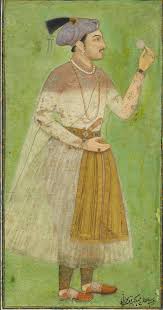Muslin: A High-Quality Fabric
Muslin is a high-quality fabric because of its breathability, versatility, and durability. It has been popular since ancient times due to its numerous beneficial properties.
Popularity and Specialty of Muslin
Muslin’s popularity can be traced back to its roots in ancient India and the Middle East. It was highly sought after for its lightweight and airy qualities, making it comfortable to wear in hot climates. Muslin was considered special as it was often used to make garments for royalty and the elite. This fabric’s luxurious status made it a valuable commodity in global trade.

Comfort and Composition of Muslin
Muslin is not itchy, as it is made from natural fibers, usually cotton. The soft and breathable texture of muslin makes it a comfortable choice for clothing and various other textile applications. Its weight is generally lighter than traditional cotton fabric, making it an excellent option for hot-weather clothing.
Absorbency and Suitability for Different Climates
Muslin is capable of absorbing water due to the natural fibers it is made from. Its absorbency, along with its breathability, makes muslin suitable for both warm and cold weather. While it provides insulation in colder climates, its lightweight nature also allows for air circulation in warmer weather.
Comparing Muslin to Other Fabrics
When it comes to hot weather, muslin is considered one of the best fabrics for keeping cool. Other suitable fabrics for hot weather include linen, cotton, and chambray. Each of these materials has its unique benefits, but muslin stands out for its delicate and airy qualities.
Wrinkle-Resistance and Warmth
Muslin does have a tendency to wrinkle easily due to its loose weave. However, this characteristic also contributes to its breathable and comfortable nature. Although muslin is lightweight, it can provide warmth when layered, making it a versatile fabric for various climates and seasons.
Alternative Names for Muslin Cloth
Muslin cloth is also known by several other names, such as mull, mulmul, or muselina. The names may vary depending on the region, but they all refer to the same lightweight, breathable, and versatile fabric that has been cherished for centuries.
The Timelessness of Muslin
Muslin has proven to be a timeless fabric, with its use spanning centuries and cultures. Its versatility allows it to be utilized in a variety of applications, including clothing, home furnishings, and even culinary purposes. As a testament to its longevity, muslin remains a popular choice for designers and consumers alike today.
The Environmental Impact of Muslin
One of the reasons behind the muslin’s enduring popularity is its sustainability. Being a natural fabric, it is biodegradable and has a smaller environmental impact compared to synthetic materials. Additionally, the muslin’s relatively low water consumption during production contributes to its eco-friendly status.
Caring for Muslin Fabric
To maintain the quality and appearance of muslin, it is essential to care for it properly. It is best to hand wash muslin in cold water using a gentle detergent, and air dry it to prevent shrinkage. If needed, muslin can be ironed at a low temperature to remove wrinkles.
Muslin in Modern Fashion
Contemporary fashion designers often turn to muslin for its unique qualities, such as its softness, breathability, and versatility. The fabric’s adaptability allows it to be used in various styles, from casual wear to high-end fashion. Its lightweight nature also makes it an ideal choice for layering and creating intricate, flowy designs.
Muslin for Babies and Children
Muslin is a popular choice for baby and children’s clothing due to its gentle and hypoallergenic properties. It is commonly used to create swaddles, blankets, and clothing that are soft and comfortable against a baby’s sensitive skin. The fabric’s breathability and absorbency also help keep babies cool and dry, further enhancing its appeal for children’s wear.
Conclusion
Muslin has long been cherished for its numerous benefits, from its lightweight and breathable nature to its versatility and sustainability. This high-quality fabric continues to be a popular choice in various applications, including clothing, home furnishings, and baby products. With proper care, muslin’s delicate and comfortable qualities can be enjoyed for years to come.


Pingback: 10 Muslin Fabric Uses That You Should know - BlainesApparel.com